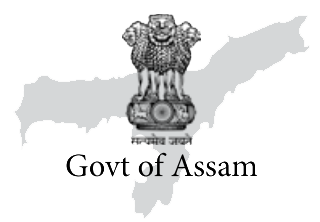The Assamese traditional scarf, “Gamocha”, the identity of Assam, has received the Geographical Indication (GI) tag from the Geographical Indications (GIs) Registry. The feat was achieved on December 13, 2022, five years after the claim was made by the State Directorate of Handloom and Textiles. With this Gamocha became the 10th product or goods from Assam to get the prestigious and unique tag.
The Handloom and Textile Department in its application for claiming GI tag on Assamese Gamocha mentioned it as a traditional textile product of the people. It also stated that it is “identifiable as a rectangular piece of handloom weaved white cloth, having red coloured stripes along its borders. lt may also contain different types of motifs inspired from nature with variable sizes. This makes it unique,” and hence sought its qualification as a Geographical Indication of the State of Assam.
“It is the symbol of feeling and belongingness, welcoming people, respecting elders, love and care to loved ones. Gamocha with a big flower motif is the evidence and example of the skills of Assamese weavers,” read the GI application.
No wonder, it has a big market in the State. Birendra Kumar Das, secretary, Assam Cooperative Silk House Ltd told Asom Barta, “Out of our four retail outlets in Guwahati, Kalpataru in Pan Bazar area sells over 25 thousands hand woven Gamocha in a year. In a year, we need almost two lakh Gamochas for our outlets. We are happy that finally our Gamocha has a GI tag. It was a long standing demand from weavers, producers of handloom products and State’s handloom fraternity as a whole.”
“In the last 20 years, there were floods of machine made (power looms) Gamochas in the State’s market. These were mostly produced outside of the State and priced much cheaper than the hand woven Gamochas. The GI tag status will curb this activity to a large extent,” said Das.
The GI tag for Gamocha has been registered in favour of the Directorate of Handloom and Textile of Assam Government under the Geographical Indication of Goods ( Registration and Protection) Act, 1999. The certificate has been awarded dated October 16, 2017 based on the application by the Directorate.
While the Directorate of Handloom and Textile was the applicant for the GI tag, the research and documentation was done by researchers from Assam Science Technology and Environment Council (ASTEC) and Assam Agricultural University (AAU).

Paragmoni Mahanta, Director, Handloom and Textile, Government of Assam highlighted some of the challenges post the recognition.
“Now our challenge is to streamline all issues concerning production, promotion, and marketing of Gamocha produced in handlooms. We need to create awareness among weavers about Gamocha GI,” said Mahanta talking to this reporter.
His colleague Girin Sarkar, an Additional Director, said that this will be a game changer for the weavers.
Joideep Baruah, Head, Science and Technology Division, ASTEC said that the process started in 2017 when an application for a GI tag was filed by the Institute of Handloom Development of Golaghat district in Assam. “There were anomalies in that application. The GI Registry Office asked the Directorate of Handloom and Textile about its view on Assamese Gamocha. It was then ASTEC came into the picture for research and other aspects on Gamocha. The final hearing took place in August 2022,” said Baruah.

Chief Minister Dr. Himanta Biswa Sarma termed it as a day of pride for the State. The Chief Minister extended his gratitude to Prime Minister Narendra Modi for always giving a place of prestige to this integral symbol of Assamese glory.
Union Textile Minister Piyush Goyal in a tweet said: “Assam’s Gamocha is famous in the World. Geographical Indication tag will boost the confidence of the weavers”.
Dr. Nihar Ranjan Kalita, a Researcher on State’s handloom products and a faculty, Department of Economics, SBM College, Sualkuchi said that the tag will have a high socio–economic impact in rural areas of the State. “Our handloom weavers mostly reside in villages. It will obviously give an impetus to the State’s rural economy. A household in Assam needs three to four Gamochas apart from Gamocha’s demand on festive occasions. You can easily imagine how big the market is,” said Kalita.













